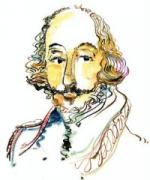|
This section contains 8,416 words (approx. 29 pages at 300 words per page) |

|
SOURCE: "Is There a Class in This (Shakespearean) Text?," in Renaissance Drama Vol. XXIV, 1993, pp. 101-21.
In the following essay, Kastan explores the nature of social crossdressing on the Shakespearean stage.
We be men and nat aungels, wherefore we know nothinge but by outward significations.
—Thomas Elyot
Money changes everything
—Cyndi Lauper
At least two considerations may prevent a quick and confident "yes" to my titular question ["Is There a Class in This (Shakespearean) Text?"]. The first is perhaps the more easily confronted. Historians have usefully reminded us that the language of class relations applied to the social formation of early modern England is an anachronism.1 Indeed "class" is a nineteenth-century analytic category and as such was obviously conceptually unavailable to the people of Tudor and Stuart England.2 But their own social vocabularies of "estate" or "degree," while insisting on social differentiation on the basis of status rather...
|
This section contains 8,416 words (approx. 29 pages at 300 words per page) |

|


